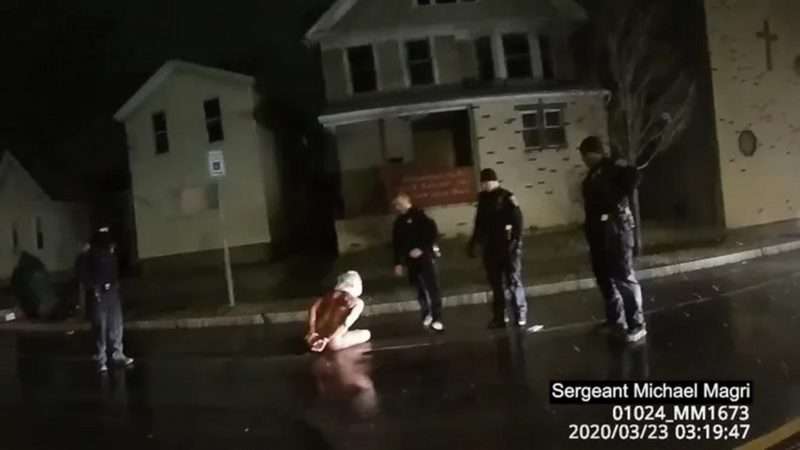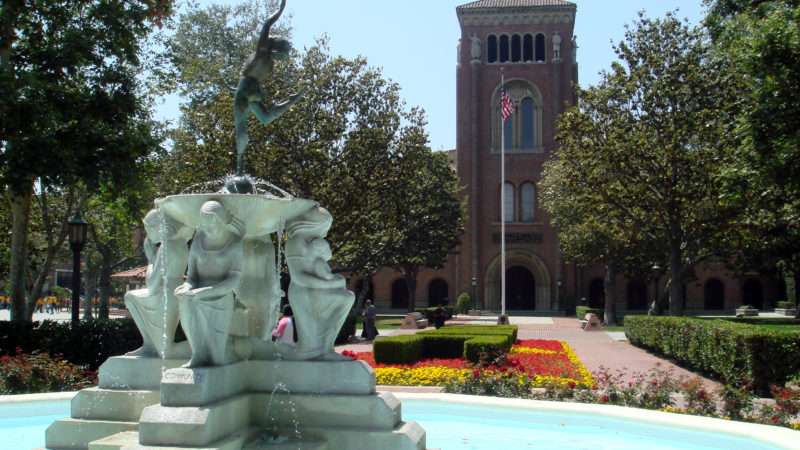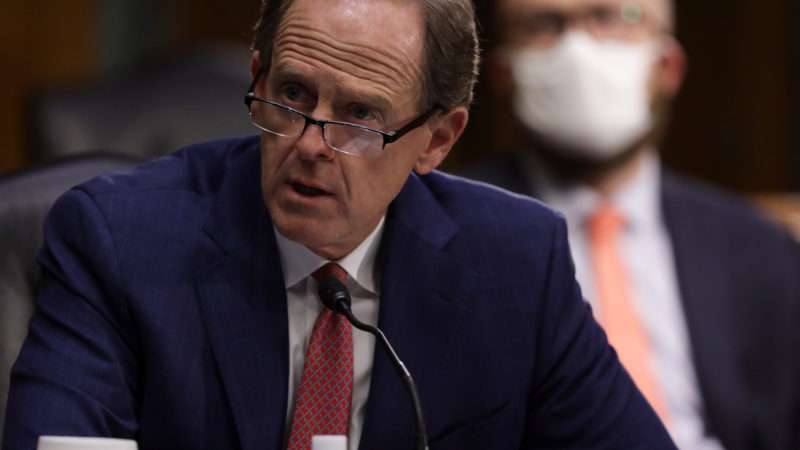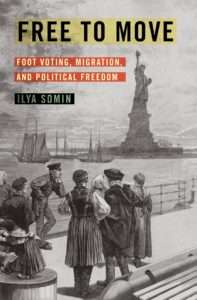Yesterday, I flagged an email from Gregory Washington, the President of George Mason University. He announced some a high-level program for accreditation titled “Transformative Education through Equity and Justice: Anti- Racist Community Engagement.” The email was vague on specifics. In July, Washington sent a follow-up email to the George Mason community with very specific initiatives. (Update: I was forwarded this email today, but it was dated July 23). He explains, “My vision is nothing short of establishing George Mason University as a national exemplar of anti-racism and inclusive excellence in action.” Washington explains that anti-racism will be incorporated into Curriculum and Pedagogy, Campus and Community Engagement, University Policies and Practices, and Research Training and Development. I have pasted the entire email below the fold. Here are four high points.
First, the most significant change concerns hiring. The email explains:
Equity Advisors are senior faculty members, appointed as Faculty Assistant to the Dean in their respective schools. Equity Advisors participate in faculty recruiting by approving search committee short lists and strategies and raising awareness of best practices. Additionally, they organize faculty development programs, with both formal and informal mentoring, and address individual issues raised by women and faculty from underrepresented groups.
If I am reading this policy correctly, these equity advisors could have a veto at every stage of the hiring process.
Second, the University will now consider “implicit bias” for tenure decisions.
We will develop specific recommendations for the renewal, promotion, and tenure processes that address implicit bias, discrimination, and other equity issues (e.g., invisible and uncredited labor) to support faculty of color and women in their professional work.
This policy is framed as a way to “support faculty of color and women.” But could an applicant’s failure to abide by implicit bias justify a denial of tenure? That is, a junior faculty members refused to comply with the implict bias re-education program. Would he be penalized by the University?
Third, the University will “require an anti-racism statement on all syllabi.” We should be clear. Anti-racism is not some sort of mundane statement favoring diversity. Nor is it a legal disclosure required by federal law (Title IX or ADA). Anti-racism is a political viewpoint. George Mason is a public institution. This requirement is likely a violation of the First Amendment. Consider an analogy that my colleague Jon Adler has raised elsewhere. In the 1950s, a public institution required faculty members to include anti-communism statements on their syllabi. That would be a 9-0 case at the Supreme Court.
Fourth, the University will consider names of buildings:
We will convene the University Naming Committee to evaluate names of university buildings and memorials to ensure they align with the university’s stated mission to serve as an “academic community committed to creating a more just, free, and prosperous world.”
Umm, the University is named after a slaveholder. Yesterday, I predicted that George Mason University would simply rebrand itself as GMU University–where the initials do not stand for anything. George Washington University will also rebrand at GW–where the initials do not stand for anything.
Throughout this entire email, Washington does not define “antiracism.” Antiracism is not the opposite of racism. I worry about my my alma matter, Scalia Law School. Declaring independence is looking better by the day.
Sent: Thursday, July 23, 2020 8:37 AM
Subject: President Washington Announces Task Force on Anti-Racism and Inclusive Excellence
Hello Fellow Patriots,
In the days that followed the murder of George Floyd, I sent you a message that promised action to address racial inequities that persist here at George Mason University.
As I enter my fourth week as president, I want to share with you the actions we will begin to take, as a community of Patriots.
George Mason University enters this national conversation with an admirable track record as a pace-setter of action for racial justice, and for truth-telling about our own past.
We are proud to draw upon the expertise of
- The Truth, Racial Healing, and Transformation Campus Center, one of the first of its kind in the nation.
- The Jimmy and Rosalynn Carter School for Peace and Conflict Resolution, one of the nation’s few schools dedicated to social justice and peace, and one of the very best.
- The Enslaved People of George Mason research and memorial project, the ground-breaking undertaking by our own faculty and students to tell the full truth of our university’s namesake so that we may learn and grow from it.
- And of course, we take pride in hosting Virginia’s largest and most diverse university student body, with a majority of our students representing communities of color, and our Black student population in particular recognized as among the nation’s top academic performers.
These are just some of the many examples of excellence and inclusion around racial justice that the Mason community has undertaken. They make us proud.
But we have work to do if we are to ensure that every student, faculty, and staff member is welcomed and respected as a full equal in this community of learning.
And the uncomfortable truth is not everyone at Mason feels equal, or is treated equally.
So, today I am creating the President’s Task Force on Anti-Racism and Inclusive Excellence, and giving its members some big assignments.
- We need to know where systems, practices, and traditions of racial bias exist at George Mason University so that we may eradicate them.
- We must build intentional systems and standards of anti-racism that will keep racial injustices from regenerating.
- I want George Mason University to emerge from this exercise as a local, regional, and national beacon for the advancement of anti-racism, reconciliation, and healing.
This task force will have a broad focus, with particular areas of emphasis including short-term and long-term improvements to how we approach:
- Curriculum and Pedagogy
- Campus and Community Engagement
- University Policies and Practices
- Research
- Training and Development
The task force will comprise many of Mason’s luminaries in racial justice, who will be joined by national experts in this topic. Members will be announced over the course of the coming weeks, and they will represent the full diversity of George Mason University, including racial, ethnic, gender, sexual identity, and religious identity.
The recommendations that we act upon will be incorporated into the university’s planning and budgeting process to ensure they have the priority and resources to take root and flourish. I am not interested in reports that sit on a shelf, only to collect dust.
Many reforms at Mason will require thoughtful consideration over time by the task force and university leadership. Others are obvious, overdue, and simply require executive leadership.
So, in keeping with my pledge to deliver actions and not just words, I am announcing immediate steps that we are taking to advance systemic and cultural anti-racism at George Mason University.
The many steps that we have identified are available in their entirety on my website, president.gmu.edu. The categories of immediate steps we are taking include:
Policing
In addition to state-mandated anti-racism training for all police personnel, we will convert the existing Community Police Council into a Police Advisory Board that actively monitors the nature of police activity and reports its findings to me.
University Policies
A number of university policies and practices that carry racist vestiges in their practices will be examined and/or curtailed, including:
- Faculty salary equity – We will complete and act upon a faculty salary equity review and work with the schools and colleges toward correcting any issues over a three-year period.
- Inclusive excellence planning – At the college and school level, we will establish Inclusive Excellence Plans that articulate the vision and definition of anti-racism and inclusiveness for that unit. The task force will develop a metric-driven template for units to use.
- Implicit bias training – Mason will establish an Inclusive Excellence Certificate Program that certifies that the schools and colleges have completed Implicit Bias Training and have established Inclusive Excellence Plans.
- Implicit bias recognition in faculty promotion and tenure – We will develop specific recommendations for the renewal, promotion, and tenure processes that address implicit bias, discrimination, and other equity issues (e.g., invisible and uncredited labor) to support faculty of color and women in their professional work.
- Equity Advisors in every academic department – Equity Advisors are senior faculty members, appointed as Faculty Assistant to the Dean in their respective schools. Equity Advisors participate in faculty recruiting by approving search committee short lists and strategies and raising awareness of best practices. Additionally, they organize faculty development programs, with both formal and informal mentoring, and address individual issues raised by women and faculty from underrepresented groups.
- Recognizing and rewarding adversity barriers in promotion and tenure – We will develop specific mechanisms in the promotion and tenure process that recognize the invisible and uncredited emotional labor that people of color expend to learn, teach, discover, and work on campus.
Racial Trauma and Healing
- We will increase the support provided students, faculty, and staff through Mason’s Counseling and Psychological Services for students, and Human Resources for faculty and staff.
Curriculum/Pedagogy
- We will finalize development and implementation of required diversity, inclusion, and well-being coursework.
- We will require an anti-racism statement on all syllabi.
Buildings and Grounds
- We will convene the University Naming Committee to evaluate names of university buildings and memorials to ensure they align with the university’s stated mission to serve as an “academic community committed to creating a more just, free, and prosperous world.”
Community Engagement
- We will grow our K-12 and community college partnerships by 50 percent, and become a true partner in the development of our region.
- We will establish a lecture series on anti-racism and inclusive excellence to establish a collective consciousness among the campus community.
Resource Commitments:
- We will identify associated budget to achieve above immediate actions, beginning with an initial $5 million commitment over three years to strengthen initiatives already underway and to fund critical priorities that need immediate attention.
- We will identify an Executive Director for the Truth, Racial Healing, and Transformation Campus Center.
Leadership in an anti-racism environment demands that we recognize how our history has shaped our view of the world and how our own actions can reshape it.
My vision is nothing short of establishing George Mason University as a national exemplar of anti-racism and inclusive excellence in action. Given the considerable head start we have on most of our sister institutions in the United States, this is a vision we can realize.
So, Patriots, let’s get to work.
Gregory Washington
President

from Latest – Reason.com https://ift.tt/356mCbh
via IFTTT





